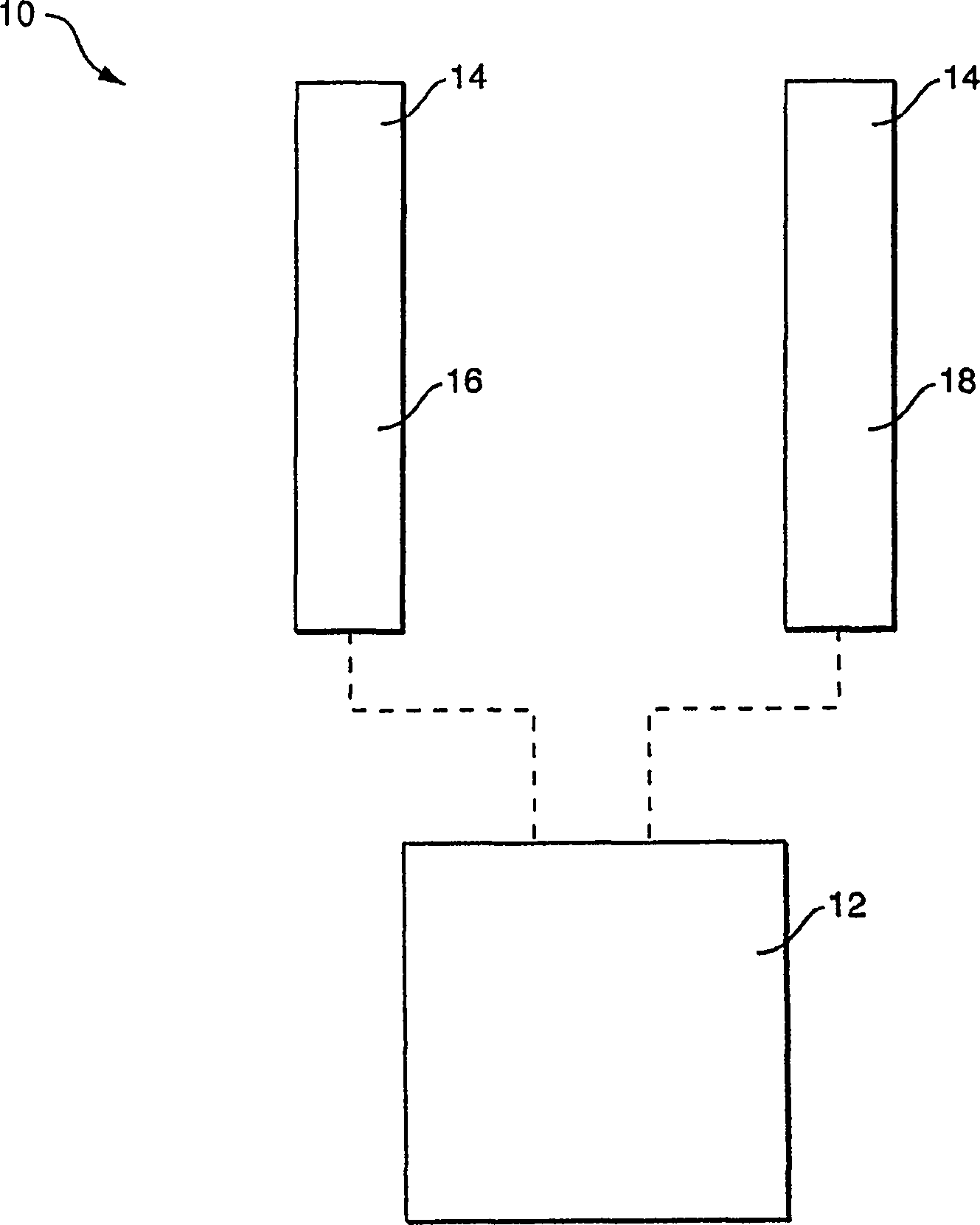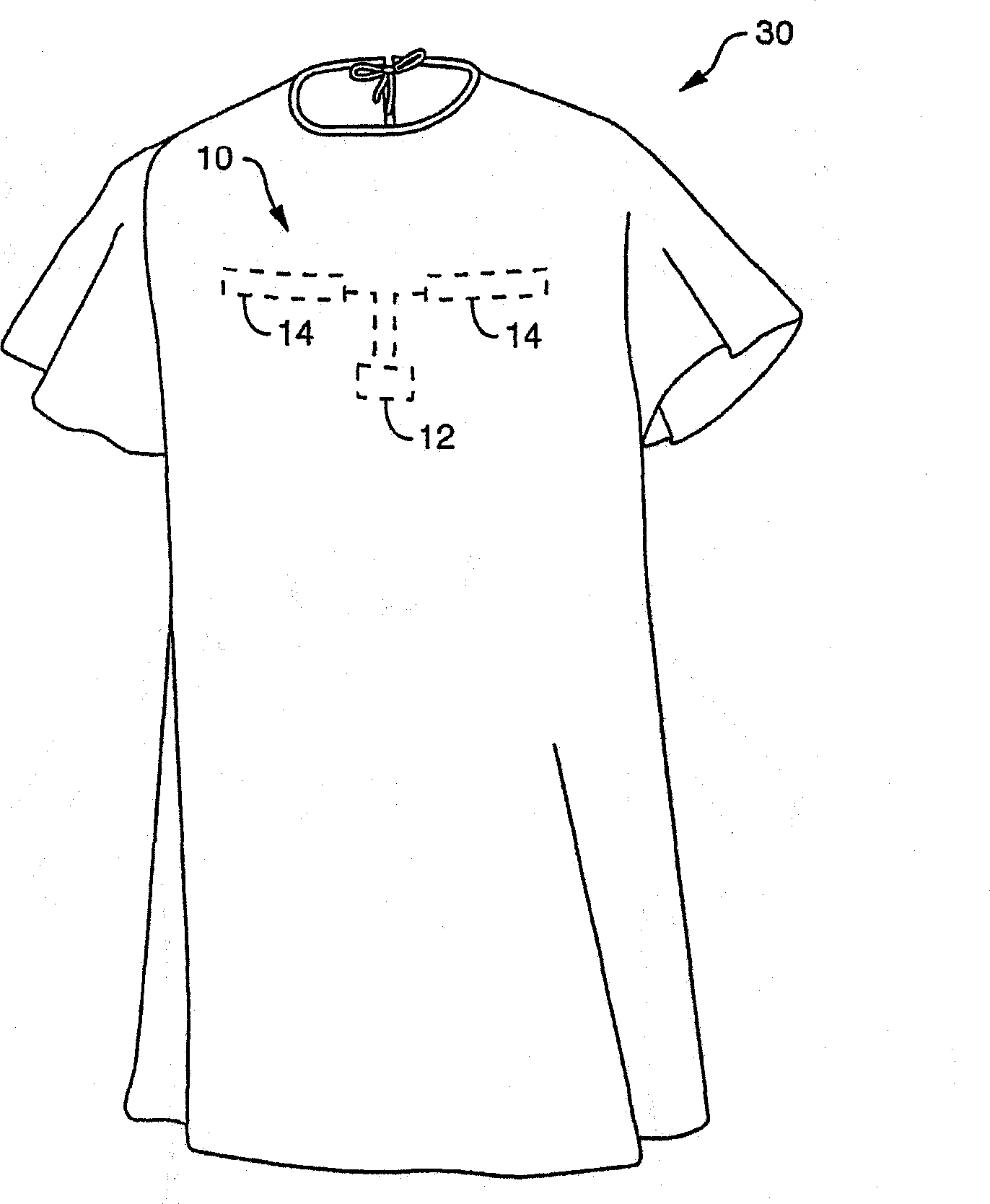Radiating element for a signal emitting apparatus
A technology of transmitting device and radiating element, applied in the field of antenna and electronic signal transmitting device, can solve the problems of unsuitable use of metal antenna and increased cost of products, etc.
- Summary
- Abstract
- Description
- Claims
- Application Information
AI Technical Summary
Problems solved by technology
Method used
Image
Examples
example 1
[0084] Conductive nonwoven webs were made according to the invention and tested as antennas. Specifically, half-wave dipole antennas were constructed from conductive nonwoven webs made according to the present invention and tested for their ability to transmit signals.
[0085] In this example, two identical strips of conductive paper material made according to the invention were attached to a pre-antenna substrate and connected to a signal generator. The strip of conductive paper material contains carbon fibers and forms a half-wave dipole antenna. The antenna is designed to radiate at 915MHz. The effective length of the antenna is 164mm. A simple test of the radiated power of the antenna. The signal generator delivers a 10dBm signal from the antenna at 900MHz. The received signal was measured using a 900 MHz calibrated antenna connected to a spectrum analyzer placed 1 meter from the antenna.
[0086] The conductive nonwoven web used to form the antenna included an uncre...
example 2
[0091] Attach the half-wave dipole antenna constructed in Schematic 1 to the prefabricated RFID tape. This RFID strip operates in the UHF range. The sensitivity of the antenna made of conductive web was measured by monitoring the power, which is the minimum power required by the RFID tape to respond to an RFID reader antenna located 1 meter away. The estimated sensitivity of the antenna is -5.1 dBm, which is sufficient for efficient readout.
PUM
| Property | Measurement | Unit |
|---|---|---|
| electrical conductivity | aaaaa | aaaaa |
| length | aaaaa | aaaaa |
| length | aaaaa | aaaaa |
Abstract
Description
Claims
Application Information
 Login to View More
Login to View More - R&D
- Intellectual Property
- Life Sciences
- Materials
- Tech Scout
- Unparalleled Data Quality
- Higher Quality Content
- 60% Fewer Hallucinations
Browse by: Latest US Patents, China's latest patents, Technical Efficacy Thesaurus, Application Domain, Technology Topic, Popular Technical Reports.
© 2025 PatSnap. All rights reserved.Legal|Privacy policy|Modern Slavery Act Transparency Statement|Sitemap|About US| Contact US: help@patsnap.com



